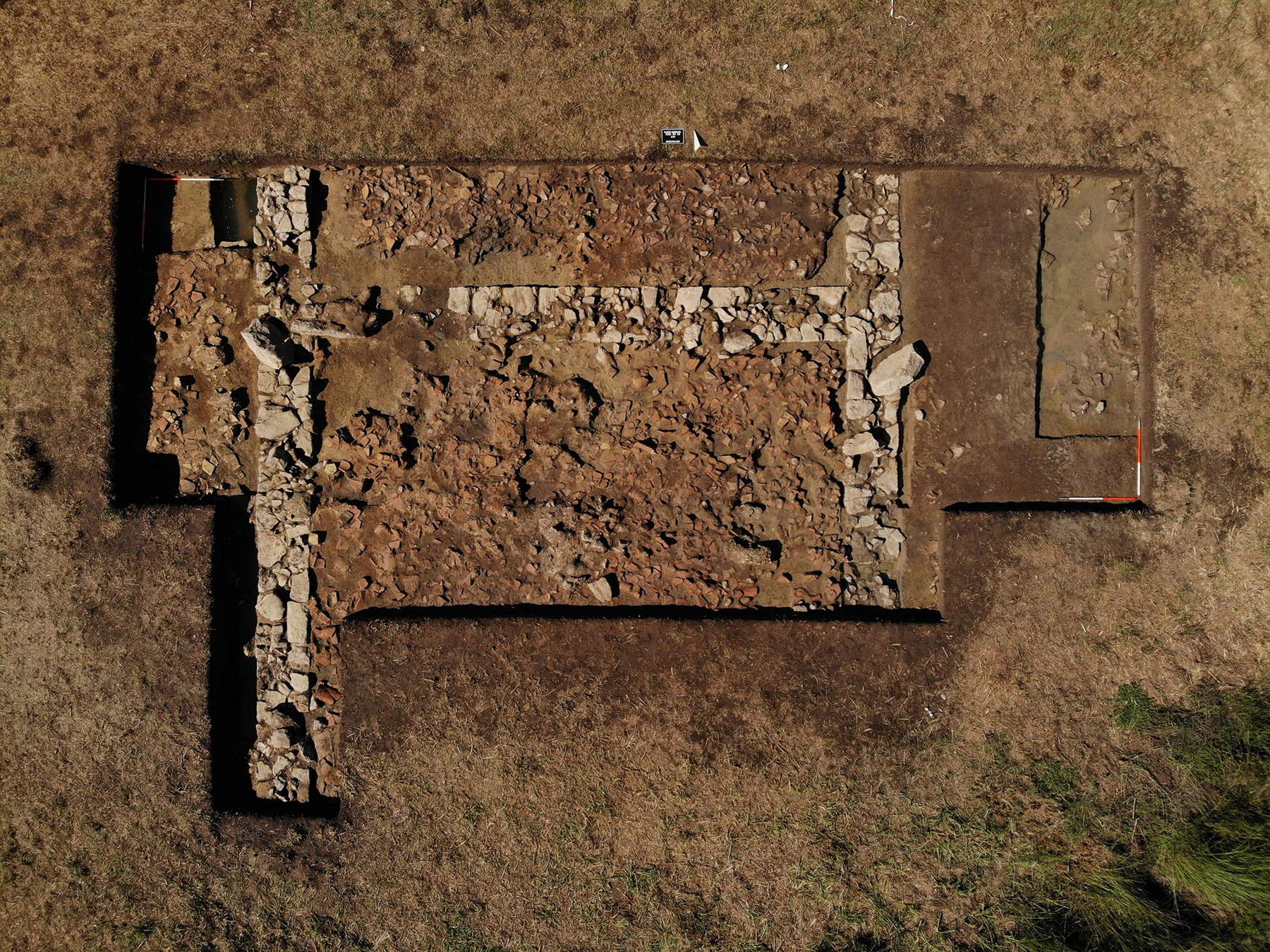Important discovery in Greece, where the remains of what is believed to be the Temple of Poseidon located on the west coast of the Peloponnese, referred to by the historian Strabo, have been discovered. The remains were found at the site of Kleidi near the town of Samikon in the region ofIlia. The news was given the day before yesterday by the Johannes Gutenberg University of Mainz: the research that led to the discovery bears the signature of the Austrian Archaeological Institute in collaboration with colleagues from the University of Mainz, the University of Kiel, and the Ephorate of Ilia Antiquities (a counterpart of our superintendency). In particular, the remains of a temple-like structure, believed to be part of the great sanctuary of Poseidon, were brought to light.
The geoarchaeological investigations of this area of the Peloponnese have been going on since 2018, when they began at the initiative of Professor Andreas Vött of the University of Mainz, with the aim of clarifying how the development of this stretch of coastline evolved: along the Gulf of Kyparissia there are in fact some rocky hills, surrounded by coastal alluvial sediments, in an area otherwise dominated by lagoons and marshes. Because this place was easily accessible and safe, a settlement was established there during the Mycenaean era that continued to flourish for several centuries and was able to maintain contacts north and south along the coast. This is precisely the context on which the investigation focused.
“The results of our investigations,” said Professor Vött, “to date indicate that the waves of the Ionian Sea actually poured directly against the group of hills until the fifth millennium B.C. Later, on the seaward side, an extensive barrier system developed, resulting in the isolation of several lagoons from the sea.” During the research, evidence was found confirming the fact that the region was repeatedly hit by tidal waves in both the prehistoric and historical periods, most recently in the 6th and 14th centuries AD. And the research results coincide with historical records of several tsunamis that occurred in the years 551 and 1303.
Then, in the fall of 2021, geophysicist Dennis Wilken of Kiel University found traces of structures at a site at the eastern base of the Gulf Hill Group, in an area that had already been identified as of significant interest following previous exploration. After initial excavation work under the supervision of Dr. Birgitta Eder of the Austrian Archaeological Institute in the fall of 2022, these structures turned out to be the foundations of an ancient temple, which the archaeologists on the research team said could very well be that of the much sought-after temple of Poseidon. “The location of this discovered sacred site matches the details provided by Strabo in his writings.” The unearthed remains are certainly not distinguished by their size: the structure found was in fact 9.4 meters wide, although it had mighty walls 80 centimeters thick. A portion of a marble perirrhanterion, or ritual water basin, was also found on the site, allowing the building to be dated to the Archaic Greek period.
Extensive archaeological, geoarchaeological and geophysical analysis of the newly discovered structure will be conducted in the coming years. Researchers hope to determine whether the ancient building has a specific relationship to this coastal landscape subject to profound transformations. Therefore, based on the geomorphological and sedimentary evidence of recurring tidal events, the “geomitological” aspect also needs to be investigated: indeed, it seems possible, they explain from the University of Mainz, that this place was actually selected to become the site of the temple of Poseidon because of these extreme events to which the coast was subjected. Poseidon, the Neptune of the Romans, god of the sea, was in fact considered by the ancients to be responsible for earthquakes and tidal waves.
 |
| Greece, remains of what is believed to be an ancient Temple of Poseidon discovered in Peloponnese |
Warning: the translation into English of the original Italian article was created using automatic tools. We undertake to review all articles, but we do not guarantee the total absence of inaccuracies in the translation due to the program. You can find the original by clicking on the ITA button. If you find any mistake,please contact us.